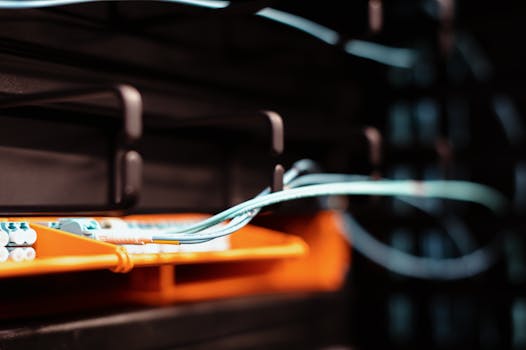From Copper to Fiber: The Revolution of Internet Infrastructure in Africa

From Copper to Fiber: The Revolution of Internet Infrastructure in Africa
The Focus Keyword From Copper to Fiber: The Revolution of Internet Infrastructure in Africa marks a significant milestone in the development of internet accessibility across the African continent. For years, Africa has relied heavily on copper-based internet infrastructure, which has proven to be limiting in terms of speed, reliability, and capacity. However, with the advent of fiber optic technology, the landscape of internet connectivity is changing dramatically.
Internet penetration in Africa has been on the rise, with more people gaining access to the internet than ever before. However, the quality of internet services has often been a point of concern, with slow speeds and frequent outages being common complaints. The shift from copper to fiber optic cables is set to address these issues, providing faster, more reliable, and higher-capacity internet connections.
The Challenges of Copper-Based Infrastructure
Copper-based infrastructure has been the backbone of internet connectivity in Africa for decades. However, it has several limitations. Copper cables are prone to signal degradation over long distances, which results in slower internet speeds. Additionally, copper cables are more susceptible to interference and damage, leading to frequent outages and disruptions. The limited bandwidth capacity of copper cables also makes it difficult to support the growing demand for high-speed internet services.
Furthermore, copper-based infrastructure is often expensive to maintain and upgrade. The cost of replacing damaged or degraded copper cables can be prohibitively high, making it a significant challenge for internet service providers to ensure reliable and efficient services.
The Benefits of Fiber Optic Infrastructure
Fiber optic cables offer a number of advantages over traditional copper-based infrastructure. Fiber optic cables transmit data as light signals, which results in faster internet speeds and lower latency. Additionally, fiber optic cables are less prone to interference and damage, making them more reliable and less susceptible to outages.
Fiber optic cables also have a much higher bandwidth capacity than copper cables, making them ideal for supporting high-speed internet services. This is particularly important in Africa, where the demand for internet services is growing rapidly. With fiber optic infrastructure, internet service providers can offer faster and more reliable services, which can help to support economic growth and development.
The Future of Internet Infrastructure in Africa
The shift from copper to fiber optic infrastructure is set to have a significant impact on the future of internet connectivity in Africa. With faster and more reliable internet services, businesses and individuals will be able to access a wide range of online services and opportunities. This can help to support economic growth and development, as well as improve access to education, healthcare, and other essential services.
Furthermore, the development of fiber optic infrastructure can help to support the growth of e-commerce and other online industries in Africa. With faster and more reliable internet services, businesses will be able to reach a wider audience and access new markets, which can help to drive economic growth and job creation.
Conclusion
In conclusion, the shift from copper to fiber optic infrastructure marks a significant milestone in the development of internet connectivity in Africa. With faster and more reliable internet services, businesses and individuals will be able to access a wide range of online services and opportunities. The development of fiber optic infrastructure can help to support economic growth and development, as well as improve access to education, healthcare, and other essential services.